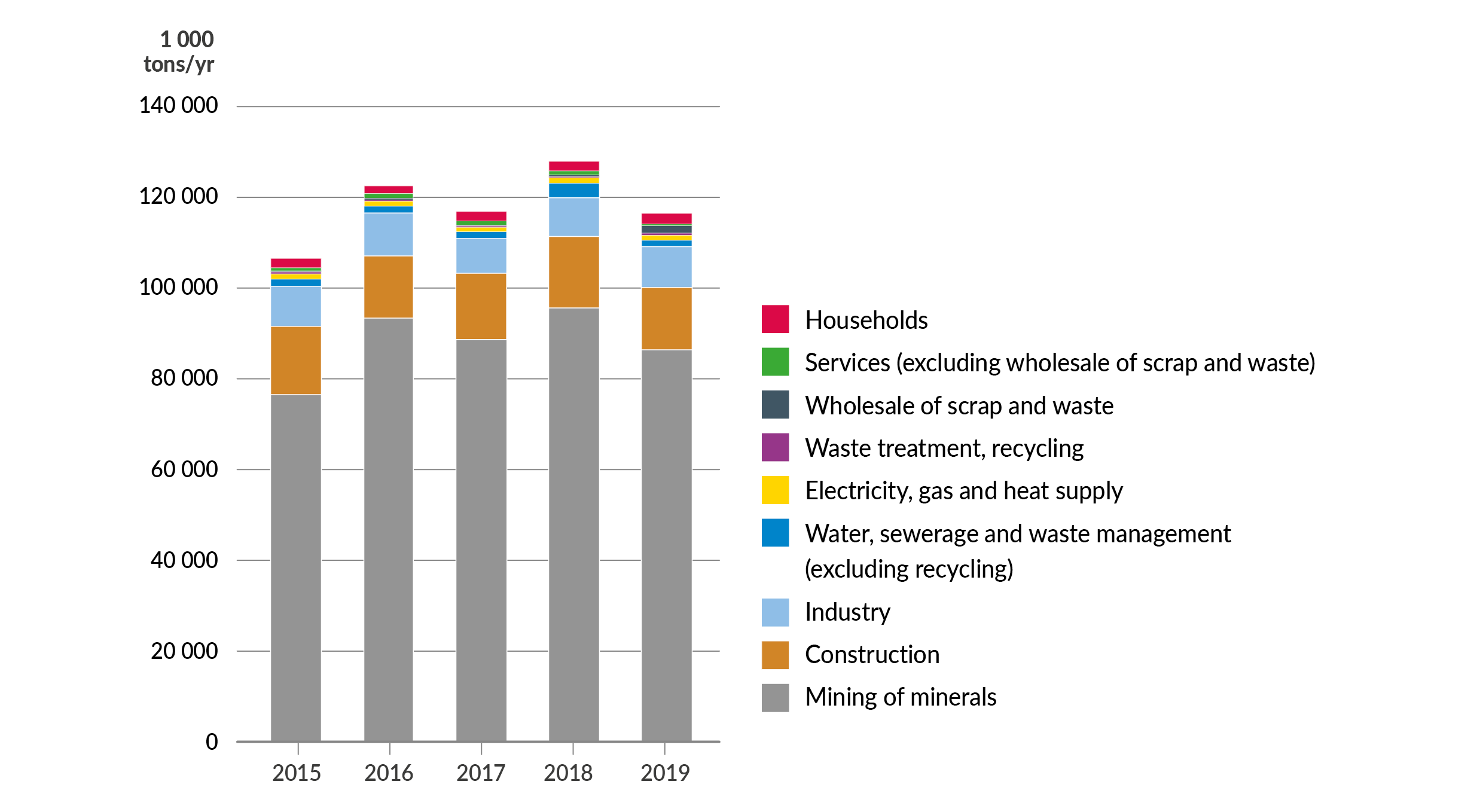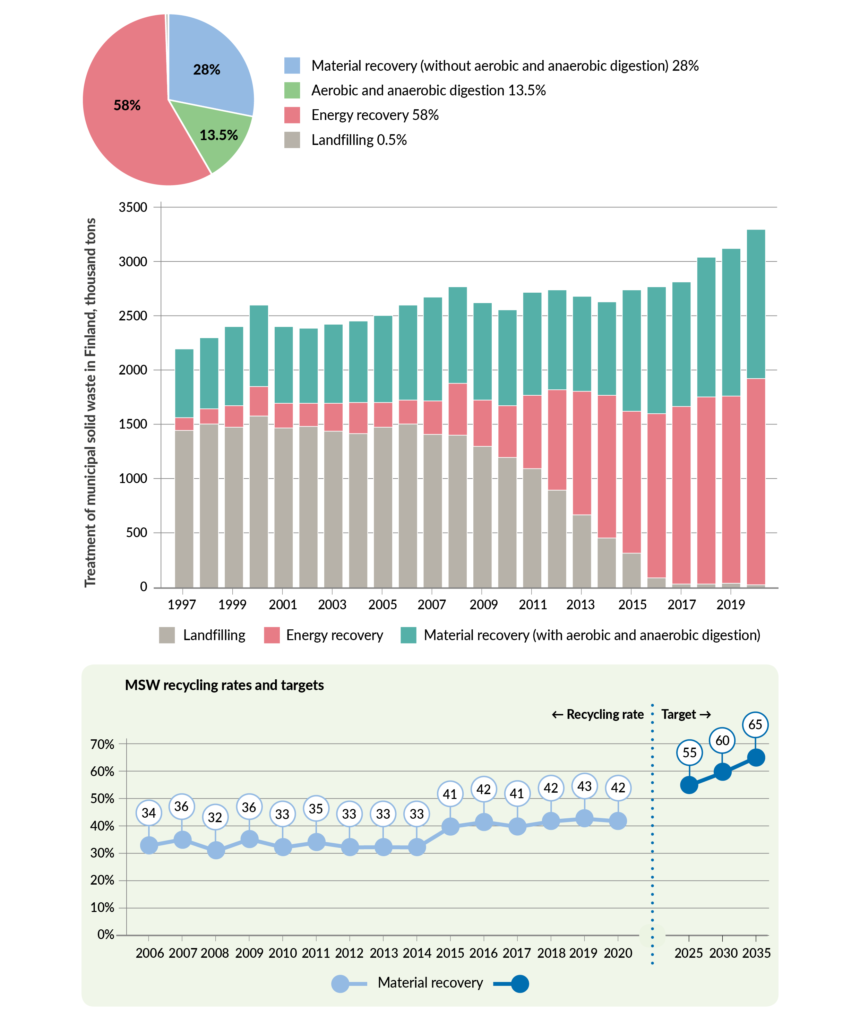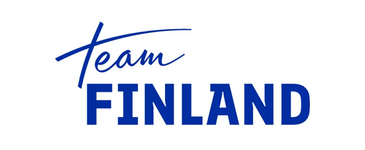Municipal solid waste
What waste is municipal waste?
Finland is an extractive industrial country, which is reflected in the total amount of generated waste.
The majority of waste is generated by mining, quarrying, construction and manufacturing. The amount of municipal waste comprises 2 – 3% of the total amount of waste. Although the share of MSW is rather small of all the waste generated in our societies, it is an important and visible part of the whole waste management system. It contains valuable materials but also harmful substances, it affects our living environment, and citizens themselves can strongly affect its amount and utilization.

This webpage concentrates only on municipal solid waste (MSW). According to the definition of European Council Directive 2008/98/EC, municipal solid waste includes waste originating from households as well as similar waste from:
- households,
- commerce and trade,
- small businesses,
- office buildings
- institutions (e.g. schools, hospitals, government buildings),
- enterprises if it is similar in kind and composition to household waste and does not come from production,
- waste from selected municipal services i.e. waste from park and garden maintenance,
- waste from street cleaning services (e.g. street sweepings, the content of litter containers, market cleansing waste).
According to the European Council Directive 2008/98/EC municipal waste means:
(a) mixed waste and separately collected waste from households, including paper and cardboard, glass, metals, plastics, bio-waste, wood, textiles, packaging, waste electrical and electronic equipment, waste batteries and accumulators, and bulky waste, including mattresses and furniture;
(b) mixed waste and separately collected waste from other sources, where such waste is similar in nature and composition to waste from households;
Municipal waste does not include waste from production, agriculture, forestry, fishing, septic tanks and sewage networks and treatment, including sewage sludge, end-of-life vehicles or construction and demolition waste.

Municipal solid waste in 2020 constituted only 2.8 % of the total waste generated in Finland accounting all in all about 3.3 million tons. The share of household waste in MSW is estimated to be about 65% and the share of administration, services etc. is about 35%.
Almost 3,3 million tonnes of MSW or around 596 kg per inhabitant was generated in 2020 in Finland. The amount of MSW continues to increase in relation to the Finnish population. At the beginning of the 2010s, the amount was about 500 kg/capita. Compared to 2019, the total amount of MSW increased by 170,000 tonnes, or by over five per cent. The long-term aim of Finland has been to get the amount of MSW/capita to decrease but without success as of yet.
In 2020, the share of material recovery of MSW was 42%
Material recovery includes also the recycling of biowaste by composting and anaerobic digestion, which comprises almost 14 percentage units. Anaerobic digestion is considered as material recovery as it generates biogas, which can be utilized as fuel. Also, the recycling rates are high for some separately collected fractions: in 2019 for paperboard packages 116%, glass packages 98% and metal packages 85%. Since 2012 energy recovery (incineration) of waste has been the most significant treatment mode of MSW now comprising 58 %. Energy recovery of MSW is mainly based on the combined production of electricity and heat (CHP) that is often utilized in district heating networks.

Municipal waste treatment (material recycling, energy recovery and landfilling in Finland, years 2000-2020, 1000 tons). Source: Statistics Finland
Share of landfill disposal of MSW remained low, at around 0.9 % due to restricting legislation. Among the materials still landfilled in Finland are residual waste which cannot be recovered, such as aggregate, asbestos, ash and non-combustible wastes. The percentage of landfilled MSW has decreased rapidly in the past couple of decades from almost 66 % to below one. Although the amount of landfilled MSW is really low at the moment, the share of material recovery is also still too low. The aim set by the EU for the material recovery of MSW is 55% in 2025, 60% in 2030 and 65% in 2035.

